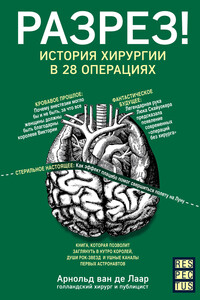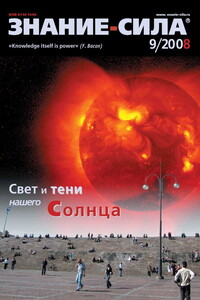9:5986.
56. Border, R., et al. (2019), American Journal of Psychiatry 176:376–87.
57. Mitchell, K. (2015), in G. Marcus and J. Freeman (eds.), The Future of the Brain: Essays by the World’s Leading Neuroscientists (Oxford: Princeton University Press), pp. 234–42; Mitchell, K. (2018), Innate: How the Wiring of Our Brains Shapes Who We Are (Oxford: Princeton University Press).
58. The PsychENCODE Consortium (2018), Science 362:1262–3.
59. Shorter, E. and Healy, D. (2007), Shock Therapy: A History of Electroconvulsive Treatment in Mental Illness (New Brunswick, NJ: Rutgers University Press); Hirshbein, L. (2012), Journal of the History of the Neurosciences 21:147–69.
60. Plath, S. (2005), The Bell Jar (London: Faber & Faber), p. 138.
61. Leiknes, K., et al. (2012), Brain and Behavior 2:283–345.
62. Pollan, M. (2018), How to Change Your Mind: The New Science of Psychedelics (London: Allen Lane).
63. Preller, K., et al. (2019), Proceedings of the National Academy of Sciences USA 116:2743–8.
64. Deco, G., et al. (2018), Current Biology 28:3065–74.e6.
65. Berman, R., et al. (2000), Biological Psychiatry 47:351–4.
66. https://twitter.com/NIMHDirector/status/1103120788272697346.
67. https://www.wired.com/2017/05/star-neuroscientist-tom-inselleaves– google-spawned-verily-startup/.
14. Локализация. 1950-е – настоящее время
1. Uttal, W. (2001), The New Phrenology: The Limits of Localizing Cognitive Processes in the Brain (Cambridge, MA: MIT Press); Raichle, M. (2008), Trends in Neurosciences 32:118–26; Poldrack, R. (2018), The New Mind Readers: What Neuroimaging Can and Cannot Reveal about Our Thoughts (Princeton: Princeton University Press).
2. Beckmann, E. (2006), British Journal of Radiology 79:5–8, pp. 6–7.
3. Ter-Pogossian, M. (1992), Seminars in Nuclear Medicine 22:140–49.
4. Petersen, S., et al. (1988), Nature 331:585–9; Posner, M., et al. (1988), Science 240:1627–31.
5. Канвишер цитируется по статье: Kanwisher, N. (2017), Journal of Neuroscience 37:1056–61, p. 1056.
6. Logothetis, N., et al. (2001), Nature 412:150–57.
7. Racine, E., et al. (2005), Nature Reviews Neuroscience 6:159–64.
8. Sajous-Turner, A., et al. (2019), Brain Imaging and Behavior, https://doi.org/10.1007/s11682-019-00155-y.
9. Rusconi, E. and Mitchener-Nissen, T. (2013), Frontiers in Human Neuroscience 7:594; Satel, S. and Lilienfeld, S. (2013), Brainwashed: The Seductive Appeal of Mindless Neuroscience (New York: Basic Books); Sahakian, B. and Gottwald, J. (2017), Sex, Lies, and Brain Scans: How fMRI Reveals What Really Goes On in Our Minds (Oxford: Oxford University Press).
10. Eklund, A., et al. (2016), Proceedings of the National Academy of Sciences USA 113:7900–905.
11. Brown, E. and Behrmann, M. (2017), Proceedings of the National Academy of Sciences USA 114:E3368–E3369; Cox, R., et al. (2017), Proceedings of the National Academy of Sciences USA 114:E3370–E3371; Eklund, A., et al. (2017), Proceedings of the National Academy of Sciences USA 114:E3374–E3375; Kessler, D., et al. (2017), Proceedings of the National Academy of Sciences USA 114:E3372–E3373.
12. Logothetis, N. (2008), Nature 453:869–78, pp. 876–7.
13. Poldrack, R. (2017), Nature 541:156.
14. Vaidya, A. and Fellows, L. (2015), Nature Communications 6:10120.
15. Vul, E., et al. (2009), Perspectives in Psychological Science 4:274–90.
16. Margulies, D. (2012), in S. Choudhury and J. Slaby (eds.), Critical Neuroscience: A Handbook of the Social and Cultural Contexts of Neuroscience (Oxford: Blackwell), pp. 273–85.
17. Bennett, C., et al. (2009), NeuroImage 47:S39–S40.
18. Poldrack, R., et al. (2017), Nature Reviews Neuroscience 18:115–26; Poldrack (2018).
19. Haxby, J., et al. (2001), Science 293:2425–30.
20. Kanwisher, N. (2010), Proceedings of the National Academy of Sciences USA 107:11163–70, p. 11165.
21. Kanwisher (2017), p. 1060.
22. https://tinyurl.com/macarthur-tweet; https://tinyurl.com/cardonatweet; https://tinyurl.com/mitchell-tweet.
23. Poldrack, R. and Farah, M. (2015), Nature 526:371–9.
24. Logothetis (2008).
25. Dubois, J., et al. (2015),







